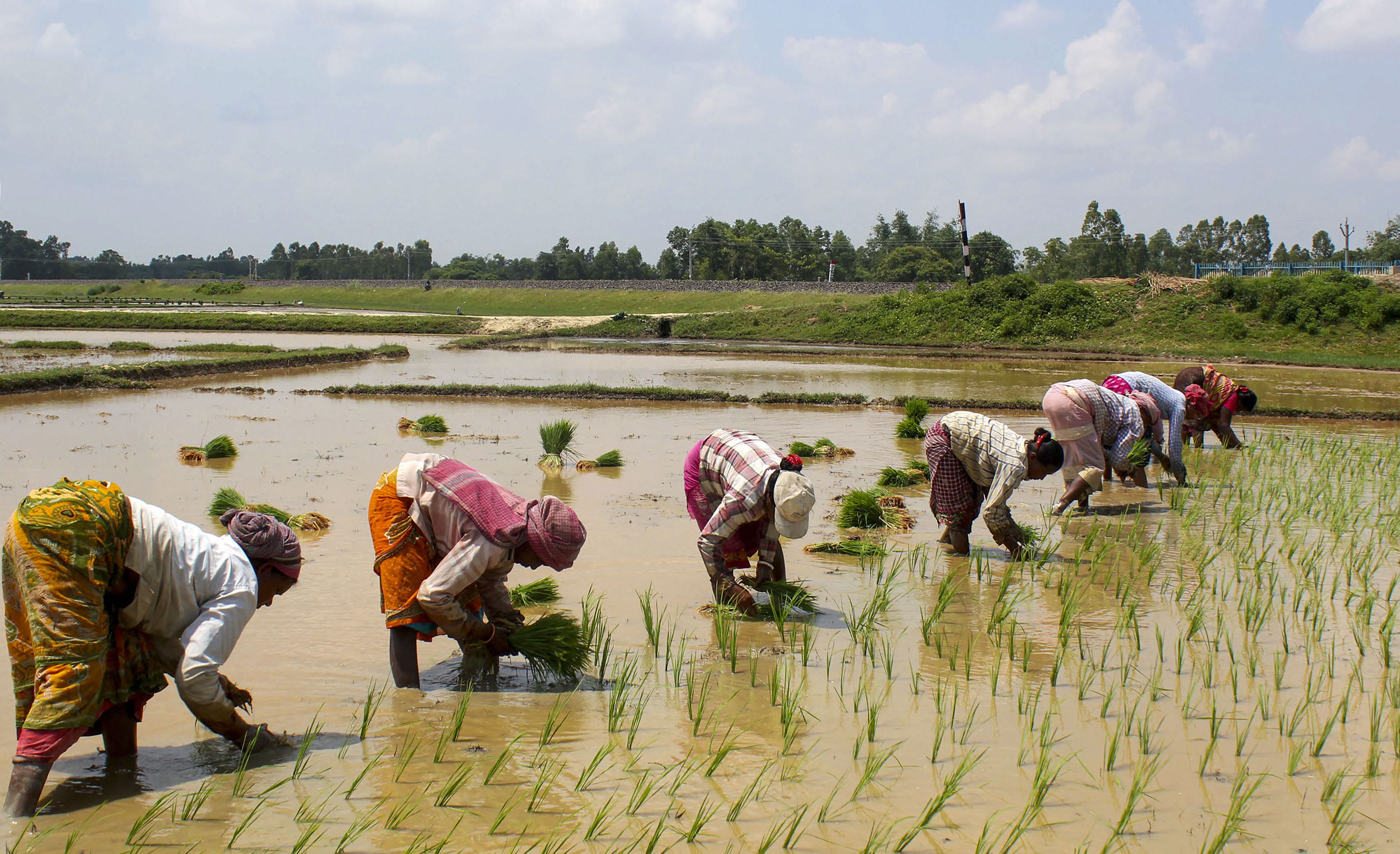
Kharif output to be below par, food inflation set to soar
The Kharif crops this year is set to hit the economy hard triggering food inflation. It is now fairly confirmed that the Kharif acreage of Soybean has shrunk by one third. Similarly, the groundnut is down 15% and cotton 14%. The acreages of tur(pigeon pea) and maize were just about the same as last year.

The Kharif crops this year is set to hit the economy hard triggering food inflation. It is now fairly confirmed that the Kharif acreage of Soybean has shrunk by one third. Similarly, the groundnut is down 15% and cotton 14%. The acreages of tur(pigeon pea) and maize were just about the same as last year.
These figures are the first final estimates compiled by Agrisk Data Analytics, a startup specialising in agriculture data. The new findings are line with the initial estimates released by the company a few months ago.
Unpredictable weather is the primary reason for lower sowing and therefore, in the final analysis, it would lead to lower agricultural output this year.
Farm woes
This season, farmers were hit by increasing input prices, delayed monsoon and a fall armyworm (FAW) attack, which impacted maize farmers the most. Fall armyworm (Spodoptera frugiperda) is an insect which feeds on more than 80 crop species, causing damage to economically crucial products like maize, rice, sorghum, legumes, vegetable crops and cotton. High infestations result in a significant loss to the yield.
Also read | GM crops: How farmers are ploughing the field of frustration
In Karnataka, Andhra and Telangana the attack initially forced the minds of the farmers to lower the Planting Intention (PI). As a result, the sowing in these three states was down by over 40%. Therefore the overall intention of sowing for the country as a whole fell by 24%.
Delayed monsoon helped sowing
Once the delayed start gave way for a robust monsoon season, the sentiment picked up and actual sowing exceeded last year’s cropped area by 6% across the country. In fact, Maharashtra, Gujarat, Andhra Pradesh and Karnataka, which earlier showed a negative sentiment, all exceeded last year’s final cropped area numbers.
However, as monsoon stretched past its normal time, large tracts of maize in Rajasthan, Gujarat and Madhya Pradesh were destroyed. The three states contributed to about 40% of the maize crop last year. Countrywide, the loss of acreage due to abandonment was 6.7%. Abandonment means farmers dropping the crop after they had sown. Thus, the final numbers of the cropped area in the states tracked by Agrisk showed a marginal drop over the last year of 1.1%.
Also read | e-Adangal, TN’s web-based land registry, leave farmers in lurch
As the data suggests, from peak arrival of 79 lakh ton in 2014-15, which was the best year, arrivals have declined considerably over the years.
According to Agrisk, the maize arrival is pegged at 3.5 lakh tonne in 2019 Kharif season so far. As opposed to this the arrivals in the same period last year was 7.2 lakh tonnes. An important reason attributed to the decline is fall in yields and improper pest management.
Soybean takes a big hit
The ratio of production to arrivals is seen to be best in soy, where it’s greater than 50% of the total production. The best has been around 63% which dropped to just under 47%. However, it continues to hover around 50% plus. As of October, the cumulative arrivals pan India was around 9 lakh tons, which is far lower compared to the same period last year. The current year looks weak given the overall crop condition, it could be the worst year ever for Soy according to Agrisk Data Analytics.
Also read | Farming in South Asia not adopted from West, says study on ancient people
According to the final yield production estimates of kharif 2019 released by Agrisk, the final acreage for soybean is estimated to be 9 million hectares, this is about 33% lower than 2018. Much of the loss happened in Madhya Pradesh due to unseasonal rains towards the end of the cropping cycle. This has caused an adverse effect on the yields which has been estimated to be lower by 13% at 825 kgs. This means that at 11.45 MT production, the estimate of Agrisk is nearly 42% lower than government estimates of 19.89 MT
Maize output to fall 50%
In the case of maize, though the acreage has been the same as Kharif 2018, the yields due to excess precipitation caused a loss of output of nearly 10%. However, the loss here has not been as bad as in the case of soybean and the production has been estimated to be 6.8 million tons. This is nearly 50% lower than government’s first estimates which pegged the output in Kharif 2019 for soy to be about 13.5 million tons.
Cows to go hungry?
If one has to summarise the Kharif 2019 data, the overall outlook of soybean is under pressure as rains have changed the entire dynamics. The biggest challenge will be maize, as its lower availability and coupled with huge washout on fodder crop implies that the animal feed will be under stress. Even to the extent that dairy output may fall by 15%.
Also read | Dry spells and floods leave Kerala farmers clueless on future
“The soybean shortfall will add to the overall animal feed complex challenge, which can potentially push the poultry prices up. Unless a drastic step is taken to contain the current shortfall in terms of allowing imports in larger quantity for feed,” says Mantha Ravishankar, founder, Agrisk.

